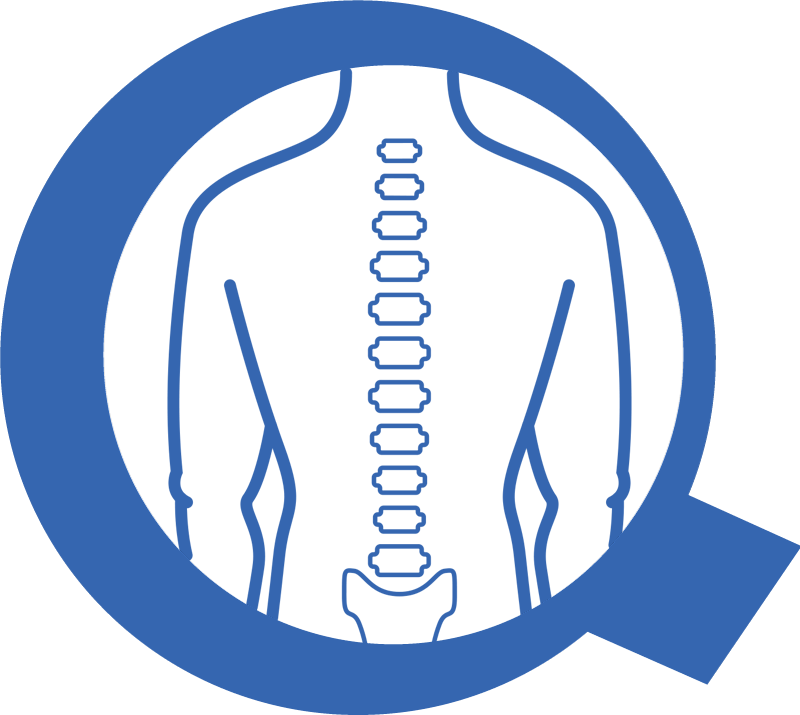Clinic of the spine

Vertebral column
The vertebral column is composed of 33 vertebrae, subdivided into:
- 7 cervical vertebrae
- 12 thoracic vertebrae
- 5 lumbar vertebrae
- 5 calcified sacral vertebrae
- 4 calcified coccygeal vertebrae
The first three segments – cervical, thoracic, and lumbar – are characterized by the interposition of a disc between the vertebrae. The last two segments – sacral and coccygeal – have calcified vertebrae between them and are often considered as single bones. The function of the intervertebral discs is to stabilize the movement between the vertebrae and distribute the load. They are circular in shape and consist of two parts: • Nucleus pulposus: located in the center of the disc and has a semi-liquid consistency; • Annulus fibrosus: a fibrous ring located on the outer part of the disc that serves to protect the disc and contain the nucleus pulposus. Disc herniation and disc protrusion. Disc herniation is a condition in which, due to significant stresses, the nucleus pulposus protrudes from the annulus fibrosus.
It is necessary to distinguish disc protrusion from disc herniation:
- Disc protrusion: partial protrusion of the disc from its normal anatomical position
- Disc herniation: complete protrusion of the nucleus pulposus from the fibrous ring.
The disc segments most prone to developing herniation or protrusion are the first and last, respectively called L1-L2 and L4-L5 and L5-S1. This is because these vertebrae, being adjacent to the rigid dorsal tract and the sacrum (which is even more rigid), often move more than necessary to compensate for the reduced movement of these tracts. However, hernias or protrusions do not always cause pain. Disc herniation causes pain when it protrudes near the nerve root and consequently compresses it.
In addition to pain, which can be local or even radiate sometimes to the fingers of hands and feet, other symptoms of disc herniation or protrusion include: • Tingling that can radiate along the territory innervated by the compressed nerve root; • Paresthesia and loss of strength that typically occur in more advanced conditions. Treatments for disc herniation and protrusion.
The remedies for lumbar hernias are varied and can be mainly divided into two groups: • Invasive remedies: surgery • Conservative remedies: physiotherapy
Conservative Treatment:
Physiotherapy for disc herniation or protrusion is currently the best tool for treating this condition. The physiotherapy cycle will aim to improve the movement of the entire spine. Initially, however, to reduce local and radiating pain, the following are used:
- Unloading postures;
- Specific manual techniques such as pumping and traction;
- High-tech physical means such as high-power laser, diathermy, hyperthermia, ultrasound. Once the pain is reduced, the recovery of correct posture is pursued. This goal is achieved with specific exercises, mobilizations, and small adjustments that the patient will have to adopt daily, such as the application of a lumbar cushion while working or driving. Sometimes, in conditions where there is particularly precarious muscle stability, the use of a lumbar belt during the day can be very helpful. In the final part of the therapeutic plan, efforts are made to improve trunk functionality with a specific rehabilitative training plan tailored to the individual being treated.
Surgical Treatment:
Surgery for lumbar hernia involves the surgical removal of the hernia compressing the nerve root. It does not always achieve the desired result and leaves a fairly significant scar tissue, which is why it is performed only in severe cases where the hernia compression risks heavily damaging the nerve.
